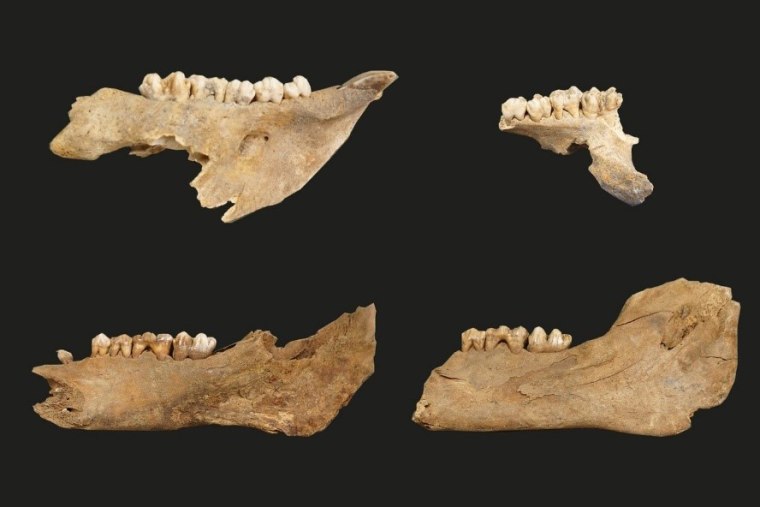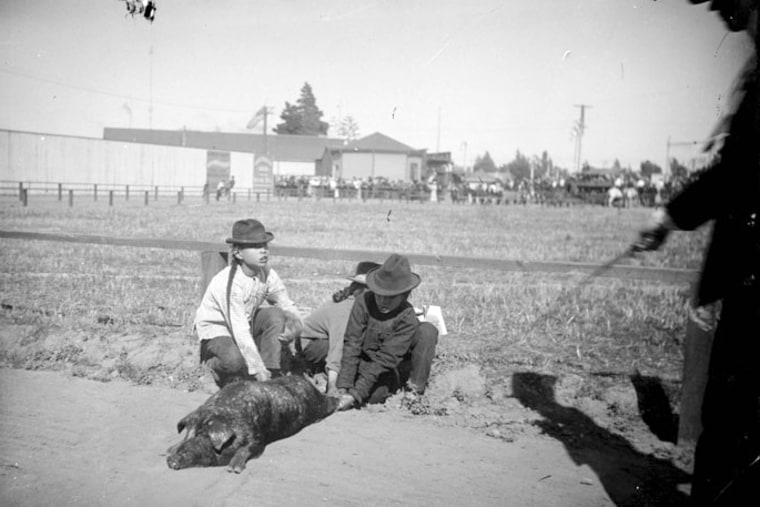At the turn of the 20th century, an era defined by Chinese exclusion laws and rampant anti-Asian sentiment in the U.S., many Chinese laborers found creative ways to sidestep racial barriers and support themselves, new research shows.
Many Chinese migrants in the old Los Angeles Chinatown turned to pig-raising and pork distribution, largely in their own community, after they finished work on the Transcontinental Railroad, according to research published this month in the archaeology journal American Antiquity. This generated a new economy in which not only jobs were created, but gave way to a system of housing, banking and community support, the study showed.
The findings not only challenge the popular notion that Chinese laborers sought to take white, working-class jobs at the time, but also revealed migrants’ self-reliance and will to put down roots in their new country, said Jiajing Wang, lead author of the study and assistant professor of anthropology at Dartmouth College.
“I’d call this their resistance to structural racism,” Wang said. “They creatively opened themselves up to opportunities to stay in this country and to make a living.”
For the study, researchers examined historical archives and pork dental remains found in L.A.’s Chinatown. They concluded that some Chinese migrants were running small pig ranches, while others raised pigs within the neighborhood, often providing this pork to Chinese butcher shops. At least four of these butcher shops have been documented, researchers said. Cheaper cuts of meat were often sold within Chinatown, Wang explained, while more expensive, profitable cuts were sold outside the community.
“Why are we so sure that these pigs we analyzed were from the Chinese community? It was because we found that so many of those pigs were eating rice,” Wang said, explaining her findings from examining dental remains. “Based on all available records, we know that if pigs were raised in other cultures, they would not be eating rice during that time period.”
Examining old newspaper archives, the researchers found that elsewhere, farmers often used other sources of feed.
“White hog farmers in California used barley and wheat, not rice, to feed their pigs. Pork was also sourced from the Midwest; however, in Chicago, pigs were fed corn,” according to a news release about the study.
The pork business also became central to many other aspects of migrants’ lives. Researchers found that many migrants would register their homes under the butcher shop’s address, even if they weren’t part of the industry themselves. Other records indicate that the establishments would charge $1 for a few days’ stay, pointing to the use of these shops as a sort of hotel or residential place. Researchers wrote that oftentimes, shops would provide some banking services as well, helping immigrants to send money back to China.
“So it’s not just a butcher shop, it’s also a social hub for the early Chinese migrants to help each other — especially the new immigrants who just got to the country and who have no place to stay,” Wang said.

And while the Chinese Exclusion Act, enacted in 1882, barred Chinese laborers from entering the country, many butcher shops found a way to challenge the restriction.
“Butcher stores employed laborers who worked for the meat shop, and they allowed for multiple Chinese migrants to become partners in the business, which gave partners merchant status so that they were exempted from the Chinese Exclusion Act,” the report said.
While the establishments often flourished, their presence wasn’t always well-received by those outside the community, Wang said.
“We have more evidence in Northern California from the newspaper reports that around this time period, there was a huge campaign, mostly by white laborers, white butchers, against Chinese pork butchers,” she said. “The excuse was that the Chinese pork was full of disease. It was dangerous. So no one should buy pork from Chinese butchers … That campaign had really bad consequences. The Chinese butchers were affected, and their market share dropped significantly.”
However, Wang underscored that no such evidence exists.
“If the animals were unhealthy, then their bones would tell us,” she said. “We have never really found evidence claiming that Chinese pork was lower grade or they were more disease than pork sold by the white butchers.”
While L.A. Chinatown’s butcher shops were destroyed along with the enclave itself to make way for the construction of the city’s Union Station, the existence of the small businesses were a testament to the community’s resilience, Wang said. It’s a story, she said, that has been overlooked for some time largely due to records being kept by those outside of the community.
“The historical records were written by people in power,” Wang said. “I was surprised when I was researching all those old newspapers, the Chinese migrants were basically not visible at all.”
For more from NBC Asian America, sign up for our weekly newsletter.
